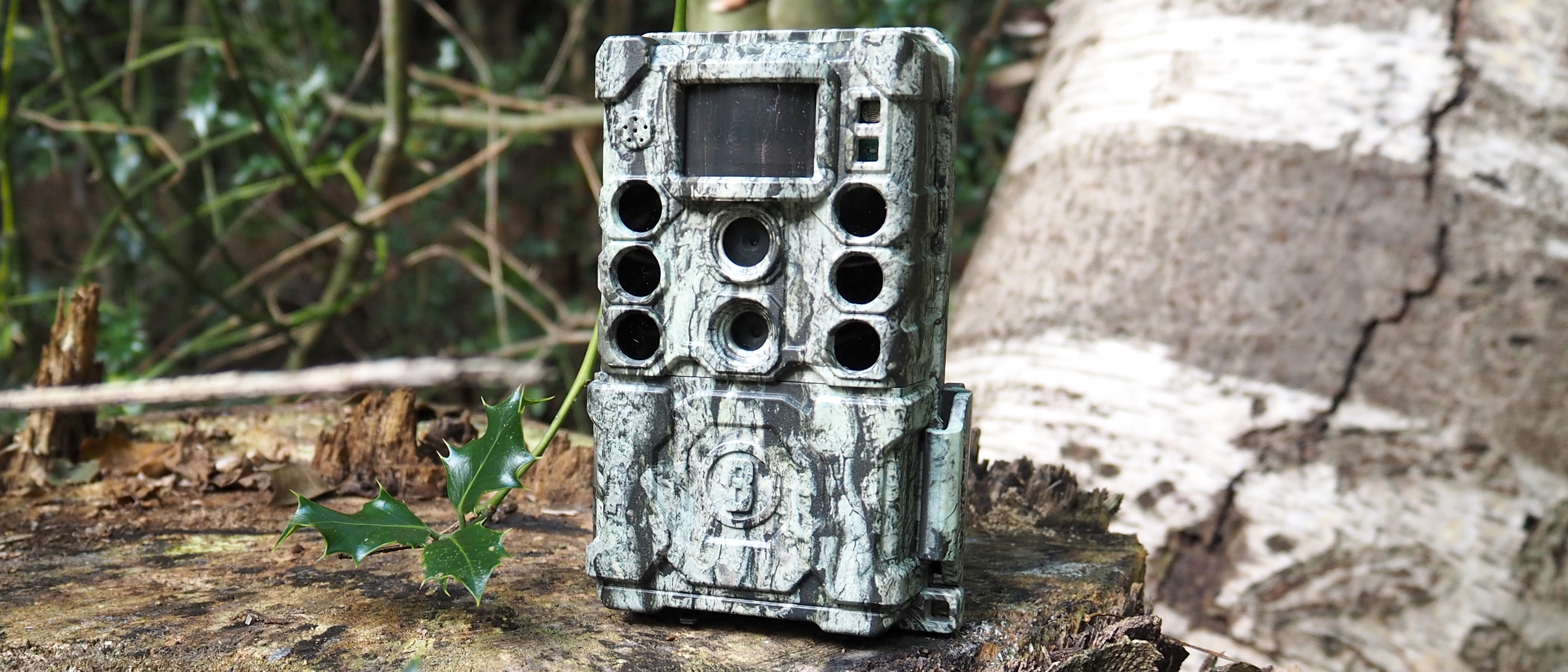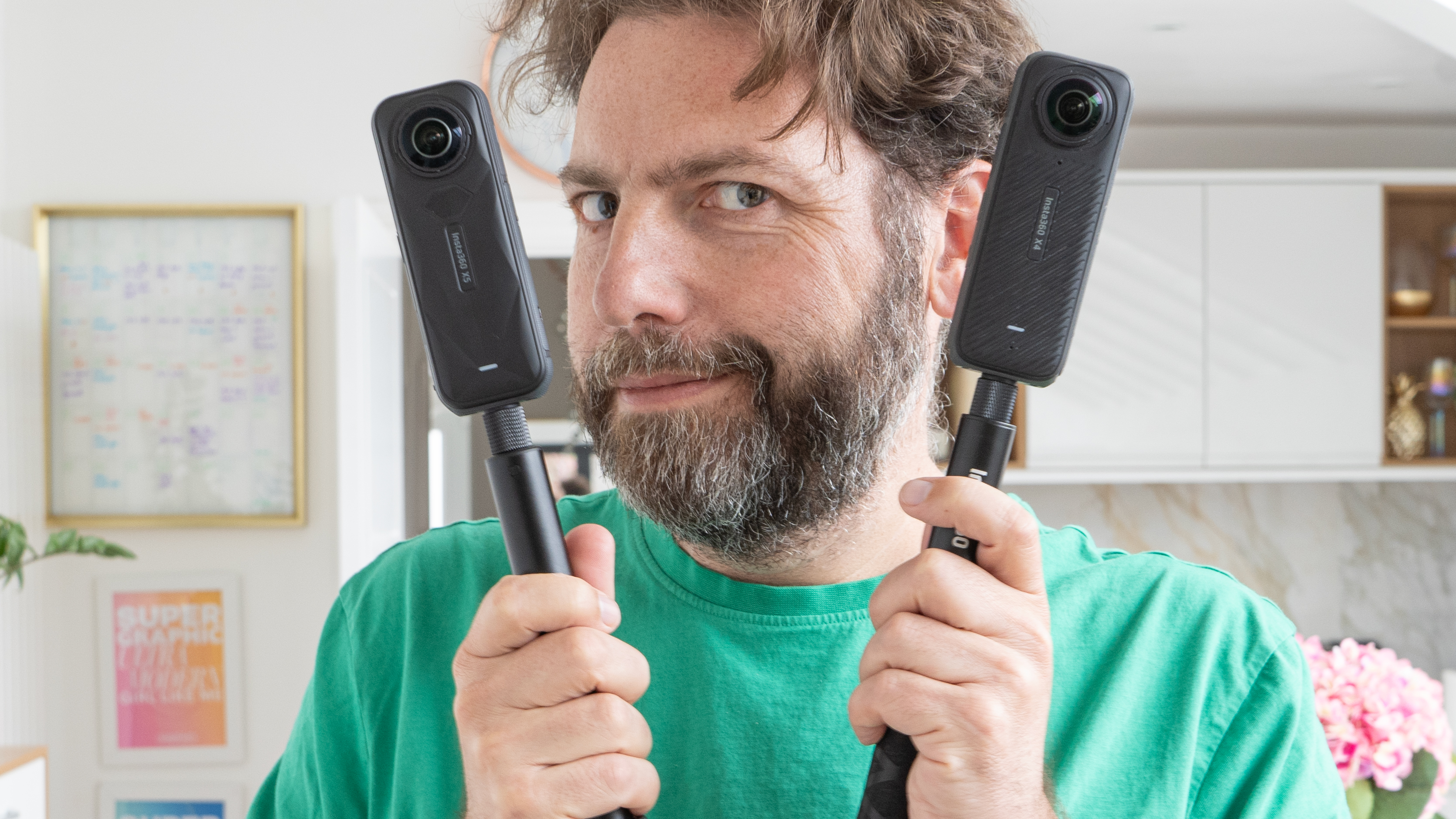Digital Camera World Verdict
Straightforward-in-use, the dual sensors of the tree bark camouflaged Bushnell Core DS-4K No Glow trail camera, variously optimized for day and night capture, provide a best of both worlds approach. With settings tweaked via a tiny LCD screen, curious observers can remotely capture up to 4k video or 32 megapixel stills of skittish wildlife without having to be in the vicinity at the time.
Pros
- +
4K video clips up to 30fps capture speed
- +
32 megapixel stills
- +
Motion detector has four sensitivity settings
Cons
- -
Trial and error and a period of familiarity required to achieve usable results
- -
6x AA batteries and memory card required for use
- -
No GPS functionality
Why you can trust Digital Camera World
Want to get closer to nature, yet from the comfort, safety and warmth of your own home? We’re all aware of surveillance cameras, as a feature of everyday existence. Well, a ‘trail camera’ is a surveillance camera and more – its built-in sensors detecting movement and automatically triggering the taking of a photograph or recording of a video sequence when any subject approaches – which means the user doesn’t need to be anywhere in the vicinity at the time the images are being taken. In fact, as trail cameras are used to keep watch on and track skittish wildlife, the best results are going to be achievable when there’s no human around to disturb proceedings.
Though the brand is best known for binoculars, the Bushnell Core DS-4K No Glow is one of a number of trail camera or ‘trail cam’ options produced by the manufacturer. It distinguishes itself from the pack, however, by featuring two sensors rather the usual one – the thinking being that with one sensor optimized for daylight capture and the other for nighttime capture, best results will be achievable around the clock. Well that’s the theory; how do things pan out in practice?
Key features
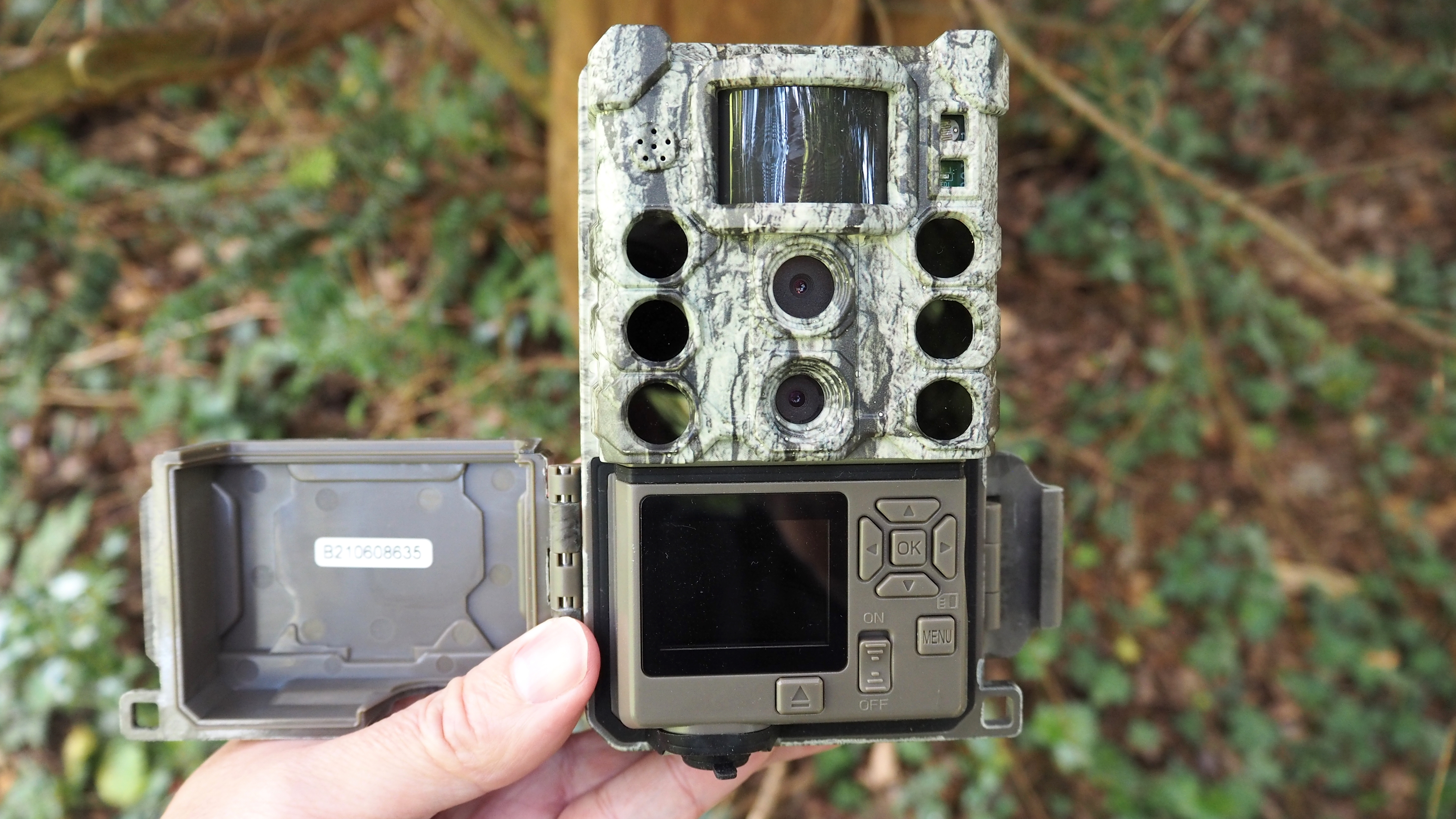
With a hard plastic exterior and camouflage print festooned fascia, the Bushnell Core DS-4K No Glow is very obviously a camera built for use in the great outdoors rather than in studio. Its moldy tree bark-like exterior signifies it’s designed to either be strapped unobtrusively to a tree trunk or tripod mounted and left out in the wild, to be trigged by the approach or proximity of wildlife, and left to cope self-sufficiently with varying weathers and lighting conditions. Its ‘no glow’ suffix signifies that it features a non-glowing LED light, so it won’t spook wildlife, particularly at night.
Offering a decent 120ft detection range, this particular trail camera sets itself apart from the pack by featuring an additional sensor over its competitors for both day and nighttime use. Its other headline features include 4K resolution video and a 32 megapixel image resolution, which is a step up from the 30MP resolution of the nearest comparable model in Bushnell’s range.
It also beats most others that tend to offer a 32GB capacity by virtue of allowing use of a generous 512GB SD card, removable media onto which said footage and images are stored. For the purposes of set up, it’s also suggested that for optimum results, the trail camera should be placed 16-17ft away from whichever position is being monitored.
The rivals
There are a bunch of competing trail cameras that serve the same function, though obviously core features such as resolution, range and functionality differ. The Bushnell Core DS-4K No Glow trail camera distinguishes itself by featuring a class leading video resolution as indicated in its model name, plus a relatively speedy 0.15 second trigger response, which provides a further draw alongside its day and night optimized twin sensors.
We should take care, however, when making our purchase selection, as there’s a near identically named Bushnell trail camera retailing at slightly less, but offering a lower 30MP and just the one sensor, as opposed to this one’s 32MP resolution and twin sensors. We think the extra is worth paying for.
Alternative manufacturers’ options worth looking at if you don’t want to spend a premium outlay include the Spypoint Force 20. This one offers a slightly lower specification, including 70ft detection range, 1080x720 pixels video clips and a SD storage capacity of a ‘mere’ 32GB. Also look at the GardePro E6 No Glow trail camera, which comes with its own phone app for remote operation and is Wi-Fi and Bluetooth enabled. On the flip side it ‘only’ offers a 24MP stills resolution and 1080P video at 30fs, rather than the 4K boasted by the Bushnell Core DS-4K No Glow.
Bushnell Core DS-4K No Glow: Handling
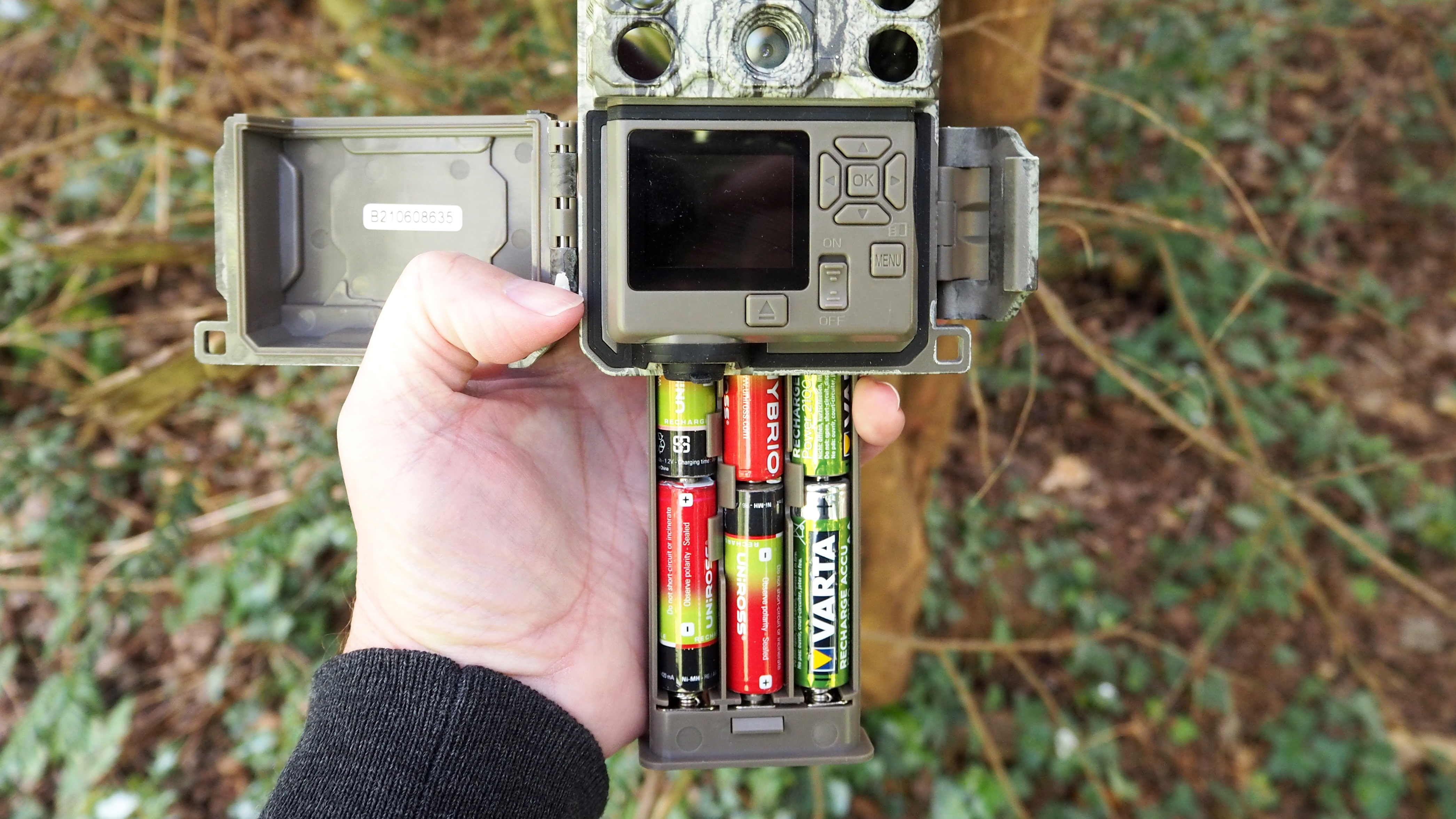
The size of a house brick, although weighing less, even with the 6xAAs required for power inserted, we’ll need to make sure the Bushnell Core DS-4K No Glow trail camera is securely and tightly fastened wherever we choose to place it for our remote observation and recording. The Chinese-made device feels obviously plastic-y when gripped in the palm, yet with little if any flex to the body. With a weatherproof exterior, we’d wager the build is robust enough to withstand the odd knock and accidental dislodge from whichever perch we’ve placed it on. We wouldn’t, however, want to try standing on it.
As users, we’re invited to exert control over the camera via a control panel that will be familiar to anyone who has operated a compact digital camera before. This comes complete with a tiny 1.5-inch LCD screen barely bigger than an actual memory card, via which we can affect and check our selections.
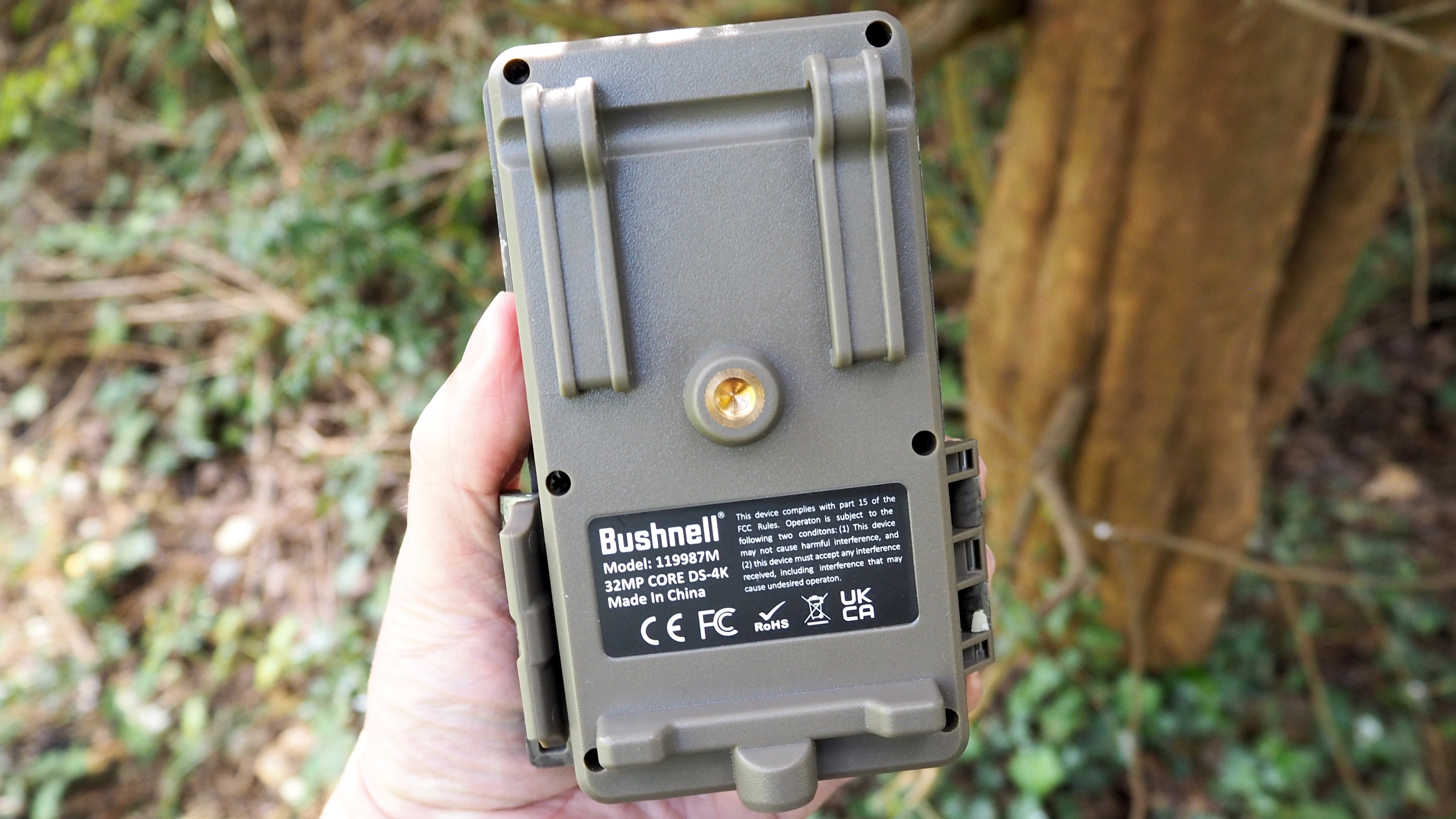
Once set up is complete, the operational buttons, screen and SD card slot are secreted from view and protected via an outer cover with a clamp mechanism to keep it securely shut. This ensures that any animal clambering over the camera once it’s been left in place won’t disturb our settings.
It’s worth adding that, while some competitors allow the entire inner camera module to be retrieved from the trail camera’s outer casing, here that element is fixed in place. For us that’s not an issue though, as the SD memory card required for storage can be retrieved and inserted into a card reader or laptop slot for playback, while the six AA batteries required for power slide into a tray compartment at the base of the unit. This tray is ejected, allowing batteries to be replaced, via a button on the backplate. Ambitiously, Bushnell suggests that a full set of batteries will last up to a year, max. Unsurprisingly the batteries required are an extra expense.
Performance
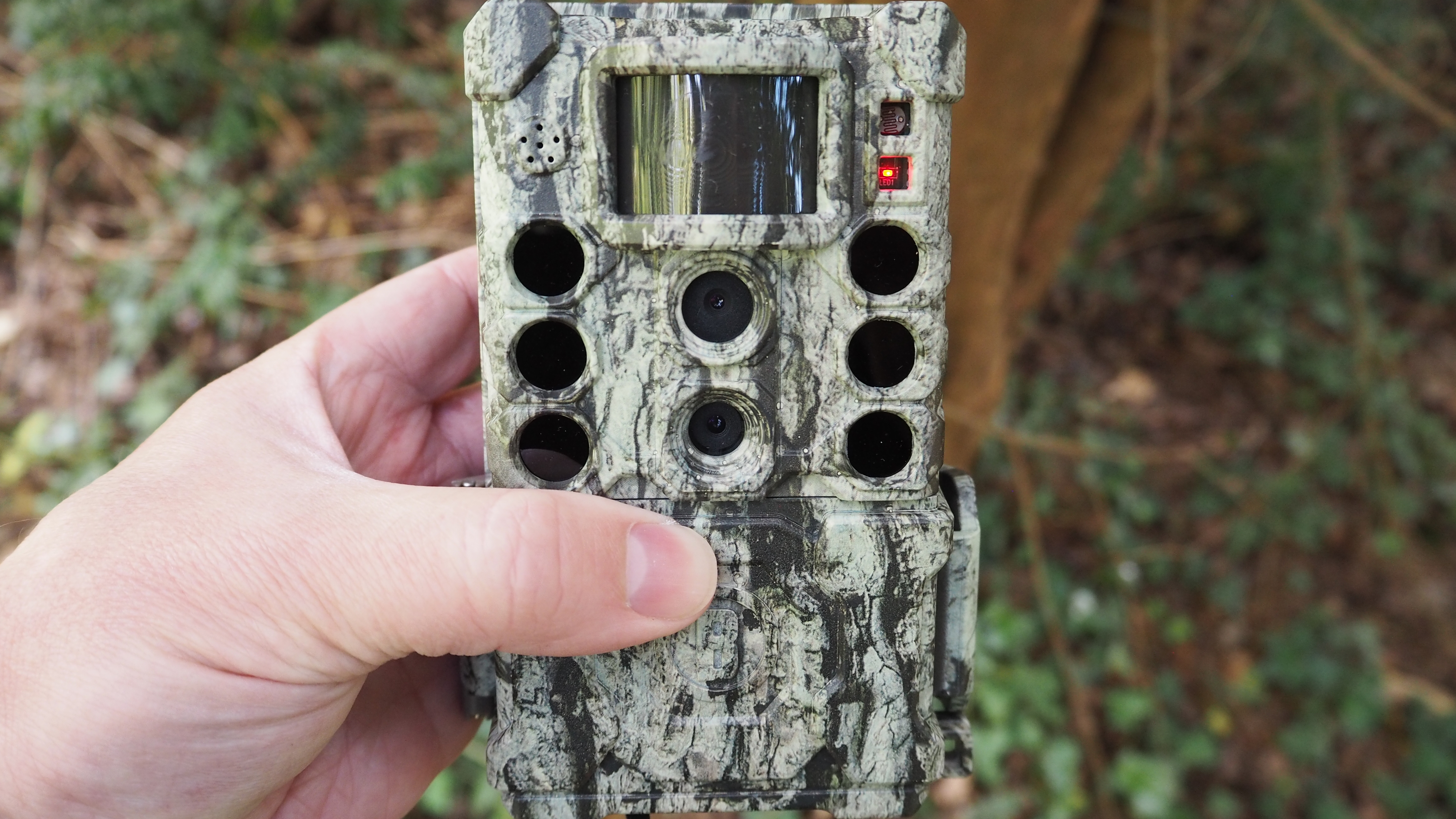
With camera operation being automatic and remote, once media card and batteries have been inserted and settings chosen, there is a brief 10-second delay period in which we can quickly retreat from wherever we’ve set the camera up, and thereby avoid accidentally triggering its operation ourselves.
Advance set up is reasonably straightforward. A choice of presets includes Feeder, Trail, Food Plot or ‘Advanced’, the latter allowing us to opt for either photo or video capture modes, or to select a combination of both capture methods. We can also select image size, to have some control over just how much we can fit on the inserted card, plus adjust the unit’s sensitivity to detect either low level, fast moving or long-range subjects.
Basic attendant functionality includes being able to format the card in use, plus manually input latitude and longitude coordinates, if desired, which had us thinking automatic on-board GPS functionality would have come in useful. Time and date can also be set, but it favors the US convention only of month first, day second and year third.
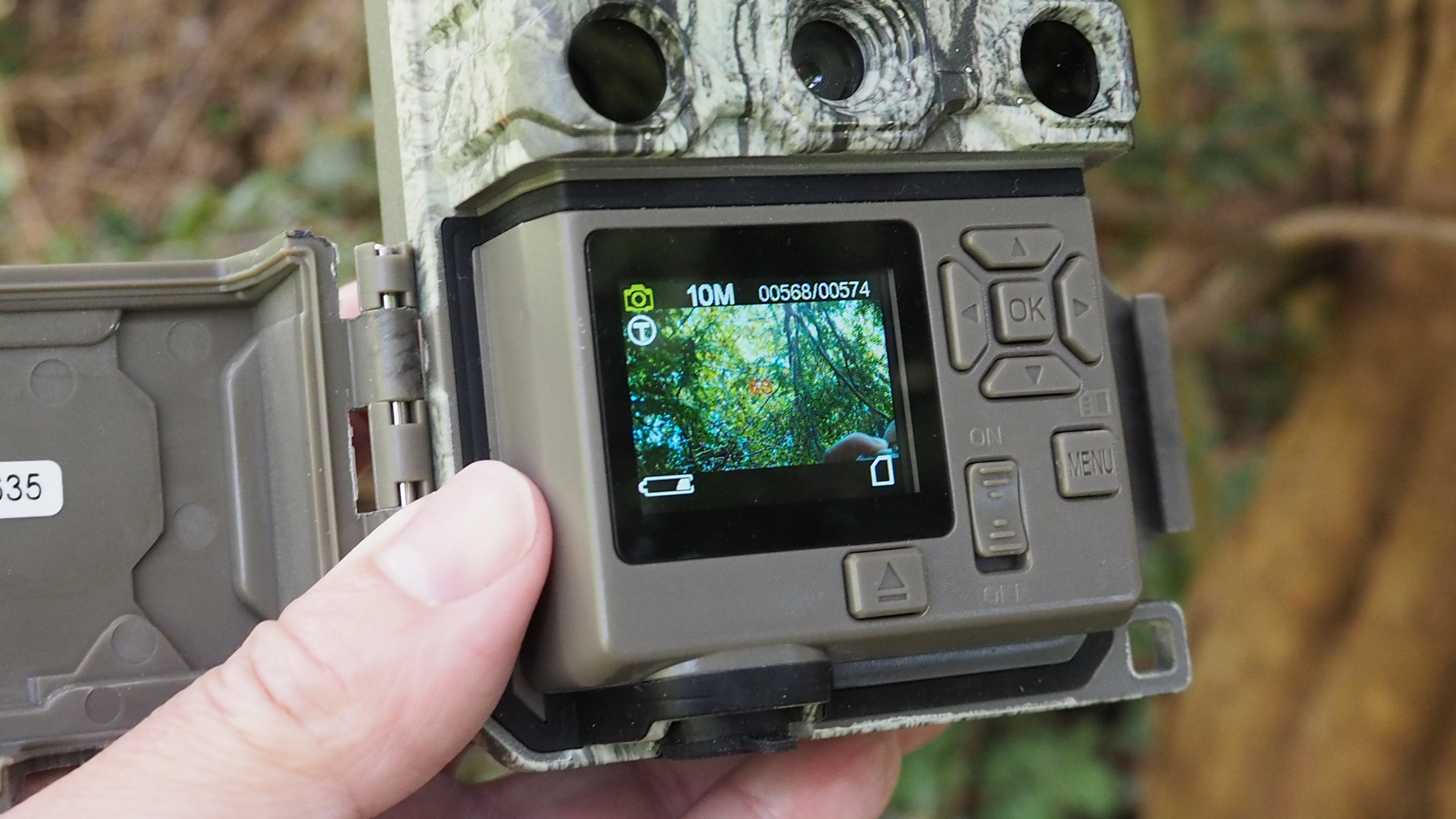
Video resolution is also selectable. We get the expected options of standard definition 1280x720 pixels, Full HD 1920x1080 pixels or up to a 4K resolution 3840x2160 pixels. Duration of capture can be tweaked upwards or downwards, though the default duration is a 10 second clip.
As the Bushnell Core DS-4K No Glow trail camera is designed to be set up and left to its own devices, we’re never quite sure what we’ll get – if anything – out of it, and so usage inevitably is a somewhat trial and error process. Still, as anyone who has watched a nature documentary that also utilizes remote filming will be aware, a large part of the appeal of trail cameras is the potential to be surprised.
Speaking from a photographic perspective, the images we got from the camera most closely resembled video grabs rather than slick or sharply defined images we might want to stick on our walls. While we weren’t expecting an equivalent SLR performance, it’s worth bearing in mind that what this one offers – remote, covert viewing – is something than an SLR can’t. So it’s very much a case of horses for courses.
Bushnell Core DS-4K No Glow: Verdict
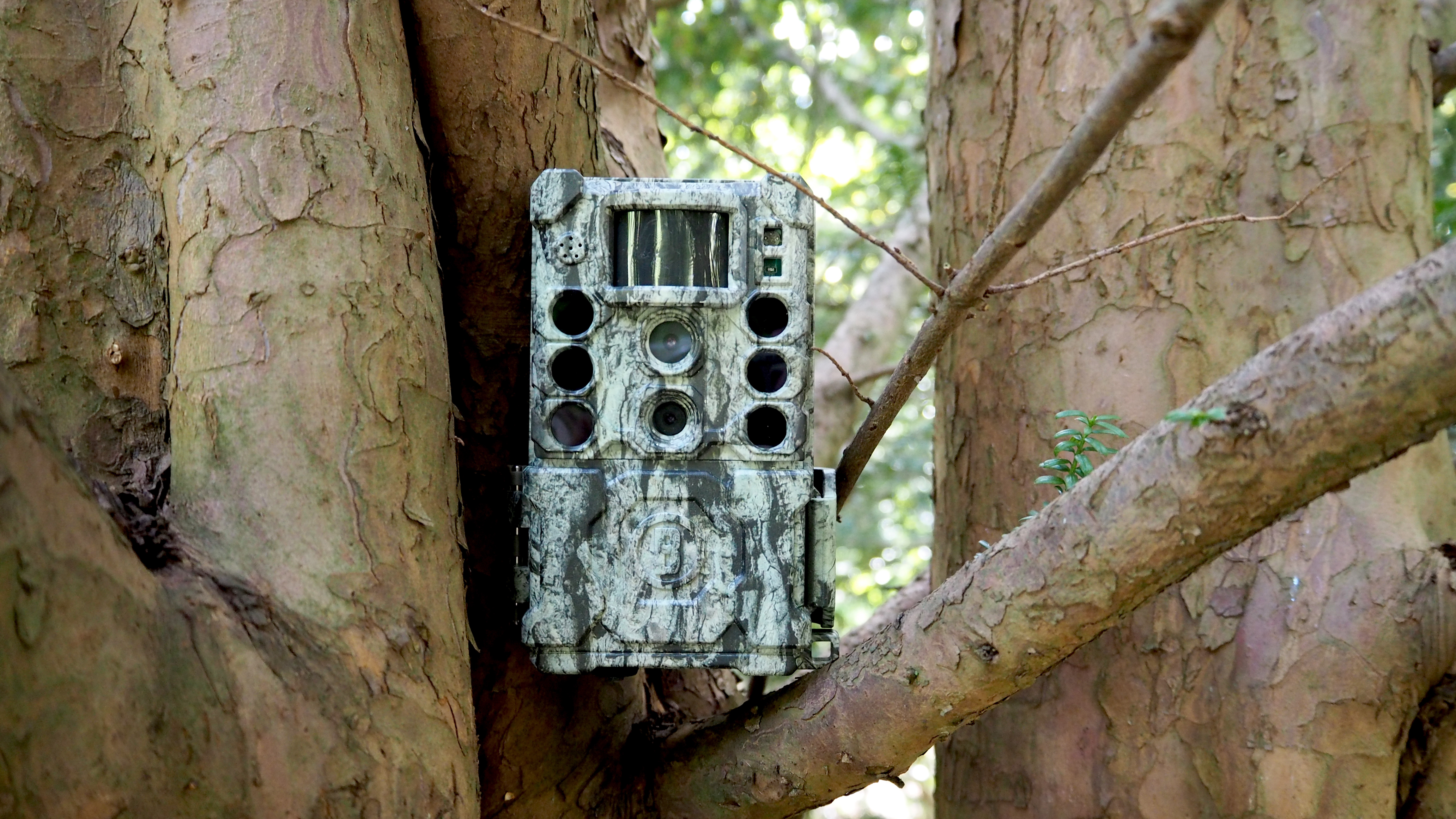
With a two-year limited warranty providing some additional peace of mind, the Bushnell Core DS-4K No Glow trail camera may command a slight price premium over other models in its manufacturer’s range, but overall we feel any extra is fair. To achieve satisfying results, practice, perseverance and willingness to go through a period of trial and error is ultimately what is required.
Read more
Best portable hides for wildlife photography
Best binoculars
Best night vision goggles
Best spotting scopes
Best monoculars
Best lenses for bird photography
10 ultimate locations for wildlife photographers
Best camera bags and cases
Gavin has over 30 years’ experience of writing about photography and television. He is currently the editor of British Photographic Industry News, and previously served as editor of Which Digital Camera and deputy editor of Total Digital Photography.
He has also written for a wide range of publications including T3, BBC Focus, Empire, NME, Radio Times, MacWorld, Computer Active, What Digital Camera and the Rough Guide books.
With his wealth of knowledge, Gavin is well placed to recognize great camera deals and recommend the best products in Digital Camera World’s buying guides. He also writes on a number of specialist subjects including binoculars and monoculars, spotting scopes, microscopes, trail cameras, action cameras, body cameras, filters and cameras straps.
